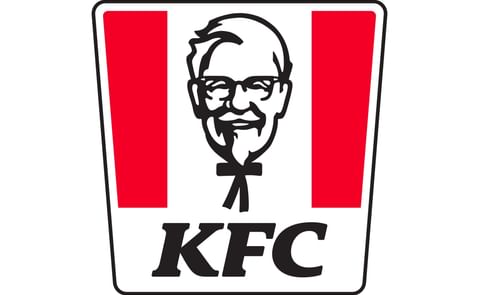Leatherhead Food Research, a leading UK-based independent research organisation, has predicted the food and drink trends set to make an impact in 2012.
“2012 looks set to be one in which on-going trends will be stretched to their full potential, particularly as consumer concerns about health and wellness have prevailed and continue to be high on the agenda,” says Laura Kempster, Senior Market Analyst. “Coupled with this, the uncertain economic future continues to affect both industry and consumers with a ‘tightening of belts’ attitude still very much affecting spending and investment.”
The 10 food and drink trends that Leatherhead has identified are: health and wellness, sustainability, convenience, flavour solutions, ‘free from’, natural, affordable luxuries, location, over 55s and softer claims.
Health and wellness
Health and wellness is a trend which has had an over-arching influence on the developments of the food and beverage industry in recent years and this influence is set to continue into 2012. Key priorities for companies include the continued efforts to meet guidelines on the reduction of salt, fat and sugar as well as the active promotion of health benefits on products (ranging from ‘one of your five a day’ to more niche areas such as the inclusion of functional ingredients).
Sustainability
As we mentioned last year, there is a continued focus from companies on issues of sustainability and this is likely to be a present and influential trend for many years to come as companies work hard to streamline their practices and supply chains into more ethically-sound operations. This encompasses a whole range of issues including packaging-reduction initiatives, ever-more ethical sourcing policies, reduction of food miles etc.
Convenience
Food seems to be everywhere we look at the moment and hundreds of column inches and hours’ worth of television programming are devoted to the topic of eating.
However, it is still highly likely that those Christmas-present cookery gadgets will remain in the cupboards next year. The fact is that whilst we’re engaging with food more than ever, our busy, chaotic lifestyles simply will not allow elaborate home-cooked meals during the working week. In addition, the development of new ‘ready meal’ concepts in the form of meal kits and premium offerings ensure that choice and quality of prepared meals are like never before.
Flavour solutions
Compensating for lower levels of salt, fat and/or sugar will continue to increase the need for more flavourful solutions. Combinations of herbs, spices and other strong flavours will provide a flavourful backdrop to many products. Think of ingredient combinations such as lemongrass, garlic and ginger or the use of seaweed as a salt enhancer. Furthermore, consumers are looking for more adventurous and ‘premium’ flavour combinations, for example the use of lavender in dark chocolate.
‘Free from’ foods market
The crux of this market lies within the seemingly growing number of consumers who do not have a diagnosed food allergy but do believe their general health improves with the omission of certain foodstuffs from their diet for example avoiding wheat/gluten to combat bloating. Therein lies an opportunity for both mainstream manufacturers to highlight additional product benefits as well as allowing the traditional ‘free from’ brands to break the niche mould within which they’ve traditionally operated.
On-going demand for natural
Whilst the hype around the natural trend has dampened slightly, the effects are on-going particularly as larger multinationals weigh up the cost/benefit of switching to natural components (e.g. food colours, flavours). However, the practicalities have set in and companies now need to consider issues such as the sustainability of supply as well as the longevity of consumer demand in their particular product area (e.g. those product categories with inherent natural associations are likely to remain in demand).
The budget conscious still seek affordable luxuries
As we progressed through 2011, the lack of confidence in markets continued to affect the economic recovery and as such the austerity measures we hoped would end are anticipated to continue well into 2012. Unrelenting pressure on household budgets will see retailers continue to flex their ‘value for money’ credentials;thus manufacturers will persist in their efforts to seek cost-effective solutions. Conversely however, food is seen as an affordable luxury and therefore lucrative opportunities do exist, for example in the form of ‘staying in’ solutions (such as meal kits) and more premium offerings.
Quality linked to location
Consumers are more keenly aware of where their foods are produced and sourced and this will continue to impact the food and beverage market in two ways. Firstly, the demand towards locally-produced and -sourced fresh food including meat, vegetables, fruit, cheese etc. has not abated and will continue into 2012. Interestingly, the restaurant industry is seeing activities such as foraging and sourcing of speciality ingredients grow exponentially as chefs seek to differentiate their menus. Secondly, more exotic ingredients such as Madagascan vanilla will also benefit from an overt provenance message. The clear message is that location helps to give consumers a distinct impression of the product’s quality.
Over 55 and fitter than ever
Longer working lives and a strong interest in maintaining a healthy, active lifestyle is leading to the creation of more products which are tailored to the specific needs and wants of these consumers. Health benefits will be at the forefront of the market and this will be a key area of development for the functional ingredients market in particular (think glucosamine – for joint health – and omega-3 products for example).
Softer claims
The ever-changing regulatory environment is having a strong impact in the way manufacturers are positioning their products. For example, EFSA regulations have taken the shine off the functional health market and the cost/benefit trade-off of substantiated EFSA claims is unlikely to provide a strong competitive edge in most cases (particularly as ‘me too’ products remove the incentive for innovation). Instead manufacturers will persist with seeking out a softer approach to deliver key messages to their consumers (e.g. within colour, imagery, phraseology etc.).
Leatherhead reveals 2012 food and drink trends

Like to receive news like this by email? Join and Subscribe!
NEW! Join Our BlueSky Channel for regular updates!
精选企业
Sponsored Content
Sponsored Content
Sponsored Content
Sponsored Content
Sponsored Content










